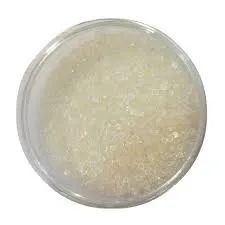Chemical Precipitation in Wastewater Treatment A Comprehensive Overview
Chemical precipitation is a widely employed method in wastewater treatment, primarily used to remove contaminants from water by converting soluble substances into insoluble solids that can be easily separated
. This method is particularly effective for the removal of heavy metals, nutrients, and certain organic pollutants, making it a critical component in modern wastewater management systems.The fundamental principle of chemical precipitation involves adding specific chemicals to wastewater, which react with target contaminants to form insoluble compounds. These compounds aggregate and subsequently settle out of the water or can be separated by filtration. The choice of chemicals used in this process is crucial, as it directly affects the efficacy of contaminant removal and the overall treatment efficiency.
One of the most common applications of chemical precipitation is in the removal of heavy metals such as lead, mercury, cadmium, and chromium. These metals pose significant risks to human health and the environment, thus necessitating effective removal from industrial effluents. For instance, lime (calcium hydroxide) is often used to precipitate heavy metals in wastewater by forming insoluble metal hydroxides. The reaction facilitated by lime not only reduces the metal concentration but also raises the pH of the wastewater, which can further enhance the precipitation of other contaminants.
chemical precipitation wastewater treatment pdf

In addition to heavy metals, chemical precipitation is vital in nutrient removal, particularly nitrogen and phosphorus, which are known to contribute to eutrophication in water bodies. The common practice for phosphorus removal involves the addition of iron salts or aluminum salts to wastewater. These materials react with phosphates to form insoluble precipitates like ferric phosphate or aluminum phosphate, facilitating their removal. Similarly, nitrogen can be removed by converting ammonium ions into insoluble forms, such as struvite (magnesium ammonium phosphate), through the addition of magnesium salts and raising the pH.
Despite its effectiveness, chemical precipitation does come with challenges and limitations. The generation of large volumes of sludge is a significant concern, necessitating further treatment and disposal methods that comply with environmental regulations. Additionally, the selection of appropriate chemicals requires careful consideration of costs, potential toxicity, and the creation of secondary pollutants. As such, constant monitoring and optimization of the process conditions are essential to minimize environmental impacts.
Recent advancements in chemical precipitation techniques have focused on enhancing efficiency and reducing costs. Researchers are exploring the use of eco-friendly chemicals and alternative materials, such as biochar and natural coagulants derived from plants, to reduce the environmental footprint of wastewater treatment. Furthermore, the integration of chemical precipitation with other methods, such as biological treatment, membrane filtration, and advanced oxidation processes, has shown promising results in improving overall system performance.
In conclusion, chemical precipitation remains a cornerstone technique in wastewater treatment, effectively addressing the challenge of removing harmful pollutants from industrial and municipal effluents. Its ability to remove heavy metals and nutrients is critical in safeguarding water quality and protecting ecosystems from the adverse effects of pollution. As technology continues to evolve, the development of more sustainable and efficient chemical precipitation strategies will play an essential role in meeting global water quality standards and promoting environmental health. Continued research and innovation will ensure that this vital process remains relevant and effective in addressing the ever-increasing challenges posed by wastewater contamination in an industrialized world.

